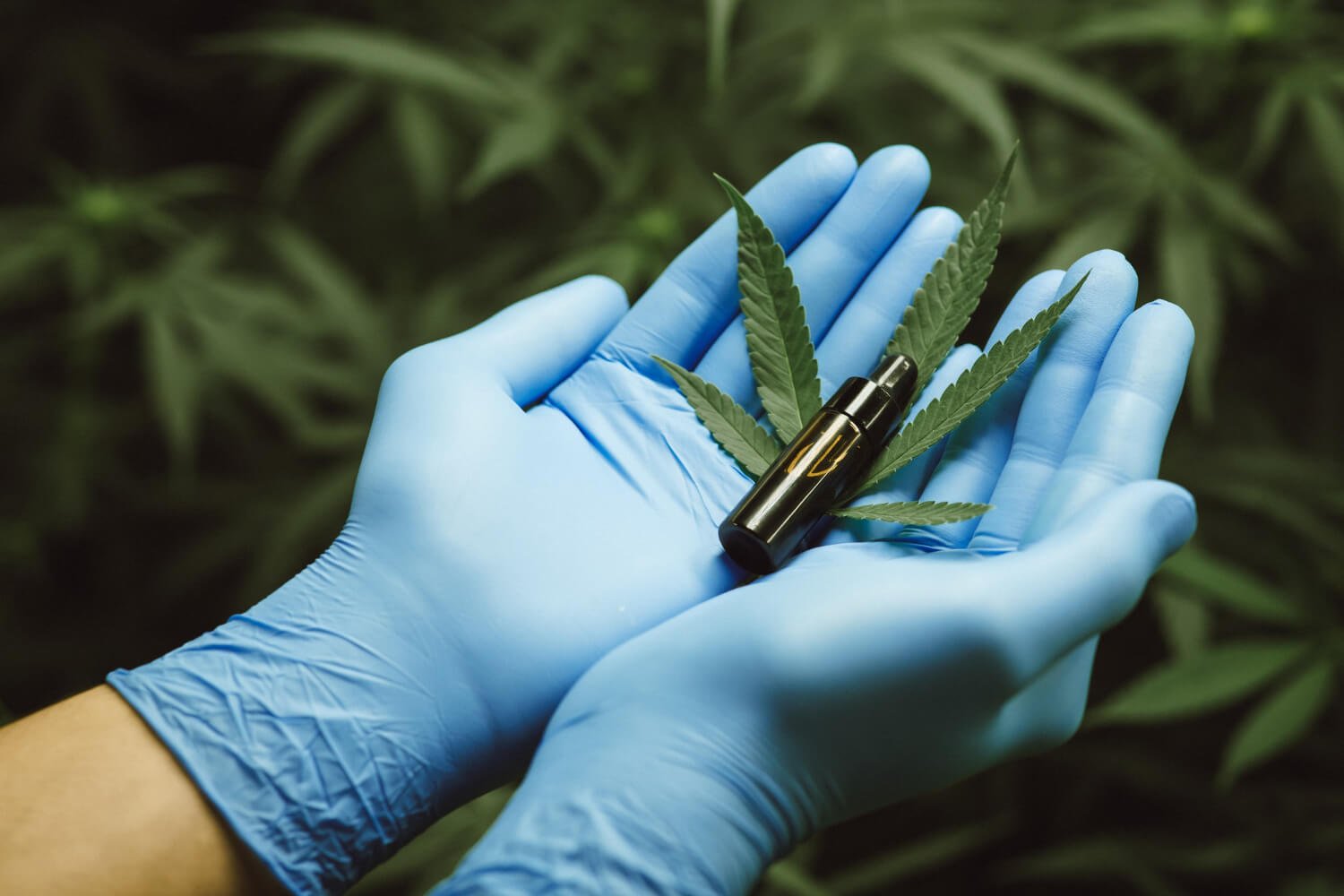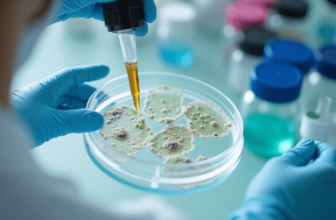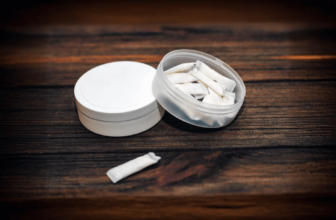If you are familiar with cannabinoids and the myriad of beneficial impacts that it has on human health and general well-being, then you would definitely be interested in knowing what is the strongest cannabinoid to exist around us today!
So, let us find out which cannabinoid owns the title of being the strongest one to date!
Which Cannabinoid Is The Most Potent?
The most potent cannabinoid to exist in our world today is called (-)-Trans-Δ9-tetrahydrocannabiphorol (Δ9-THCP), or THC – P for short. It is considered to be the most psychoactive cannabinoid because of the length of its side alkyl chain, which also imparts characteristic biological properties to it. [1] [2]
THC-P is extracted from the hemp plant just like the other variants of cannabinoids. However, it was found to be 33 times more potent and stronger than the other stronger variants of cannabinoids, such as Delta-9 THC and Delta-8 THC. [3]
THC-P is a natural cannabinoid, which makes it both a beneficial and dangerous form of cannabinoid. It depends upon the ways in which it is used that make it stand out as either one. [4]
THC-P was also found to have a greater affinity towards cannabinoid receptors, which also contributes to making it a stronger variant among the other potentially strong cannabinoids present in the world.
THC-P: The Strongest Natural Cannabinoid
Ever since THC-P was declared the strongest cannabinoid to exist, there have been several studies conducted on it to explore its potential. This THP-C is found to occur in nature in small quantities. However, it could also be prepared synthetically in the laboratory, as per need.
What makes THC-P a much stronger and better-acting cannabinoid than the others is its ability to bind strongly with the cannabinoid receptors present in the body. [5]
This property exists due to its longer alkyl chain or ‘tail’ that allows it to form bonds with the C1 and C2 cannabinoid receptors. When this happens, more potent or stronger effects are experienced by the body and the brain.
This impact of THC-P has been found to be effective for humans in many ways. The most important use is its application as a pain-killer. When used in conditions of severe pain, it could help alleviate those symptoms and provide relief to the suffering patient. [6]
THC-O: The Strongest Synthetic Cannabinoid
In the previous section, we learned that THC-P is the strongest, naturally occurring cannabinoid. However, when it comes to talking about the strongest, synthetic cannabinoid, then it is THC-O that owns the label for being one. [7]
THC-O refers to tetrahydrocannabinol-O acetate. Unlike the other popular and potent forms of THC, this form of cannabinoid refers to that variant of THC that is wholly prepared in the laboratory from synthetic material.
Being a synthetic, human-made substance, THC-O has some evident serious side effects that often raise questions about its safety.
These concerns arose when many patients experienced different symptoms after consuming THC-O, such as increased anxiety, hallucinations, dizziness, and even some instances of falling or passing out soon after THC-O was taken. [8]
It is because of reasons like these that the commercial usage of THC-O, the strongest synthetic cannabinoid, is a controversial topic that needs further research.
5 Other Strong Cannabinoids You Can Try
Apart from THC-P and THC-O, there are several other potent and strong forms of cannabinoids that could be taken for the same or different purposes.
Their strength and intensity are all based on how strongly they form bonds with the receptors present in the human brain and body.
A brief overview of the different types of strong cannabinoids is given in the following section:
Delta-9 THC
Delta-9 THC is a well-known and well-studied type of cannabinoid. It is known majorly for its potent intoxicating effects.
Delta-9 THC helps people with a wide range of problems. It helps alleviate anxiety, helps people create clarity of mind with increased focus and concentration, and also helps with insomnia in the majority of cases. [9]
When used within the safety limits, Delta-9 THC could be a very favorable substance for human health and well-being.
However, when used carelessly, it could give rise to potential side effects such as memory loss, dizziness, dry mouth, and anxiety. Therefore, it is best to consume it only from the most trustworthy companies so that there are little to no consequences.
HHC
Hexahydrocannabinol, shortened for HHC, is a recently discovered cannabinoid. It could be easily synthesized in the laboratory chemically by bringing about some changes in the structure of THC, its prototype.
Since it was just recently discovered, studies are still going to explore its behavior. Also, it has not been approved by the FDA as well. When a particular form of cannabis has been recently discovered, it is best to avoid using it without knowing its safe and unsafe usage. [10]
For the time being, people have been found to use HHC mainly for their anxiety and euphoria, but the medicinal side of HHC is yet to be discovered by experts.
Delta-8 THC
Delta-8 Tetrahydrocannabinol is another naturally occurring type of cannabinoid. However, it occurs in very little amounts naturally, and so, it is synthesized artificially in the laboratories.
The current status regarding its FDA approval is controversial. The reason for this is the adverse effect and increased usage of the substance owing to its increased intoxicating effects.
Delta-8 THC has less intense effects than Delta-9 THC, although they are mainly used for the same purposes, such as pain relief, alleviation of anxiety, and euphoria. [11]
If the intensity of the effects experienced by Delta-8 THC needs to be enhanced for an individual, then they are advised to increase their quantity of consumption, while staying within the safety limits.
THC-V
THC-V, also known as delta-9 tetrahydrocannabivarin (THC-V) , is slowly gaining popularity over the recent years. It has gained the names of the ‘Diet Weed’ and ‘Weederall’, owing to its appetite-suppressing and satiety effects.
The major known action of THC-V is its ability to block the CB1 receptor. The CB1 receptor is linked with appetite and with its blockage, it could be seen that the person experiences less hunger. [12]
Currently, there have been a few research studies going on to explore and elaborate on the role of THC-V in treating diseases such as Parkinson’s, epilepsy, fatty liver disease, and others.
But until then, it continues to be used as an appetite suppressor substance.
CBD (For Non-Psychoactive Effects)
The Cannabis sativa plant was never known to house so many beneficial properties for humans and animals alike. It was only used for its intoxication and euphoria-filled effects, however, with time, people are gaining awareness regarding its uses and benefits in different fields.
Now, cannabinoid (or CBD) is recognized as a major, naturally-occurring substance that helps treat several diseases, helps with several psychological disorders, and also helps people live a little better life amidst all the chaos in this world.
When used within a controlled quantity and within the limits that are considered safe for a particular individual, one can easily make the most of the beneficial properties that each variant of cannabinoid possesses.
What to Look for in The Strongest Cannabinoids?
If you are new to the amazing, wonder-filled world of cannabinoids, then it is a normal thing to be confused about what to choose and how to do your research regarding a particular type of cannabinoid.
Firstly, you need to look at whether the cannabinoid that you are looking for is naturally occurring or not.
The reason for doing this is the mere fact that where both types are quite similar in nature, people need to take special care when going for the synthetically prepared ones since they could have more side effects as well.
Secondly, you also need to look at what particular effects you are looking for – remember, there is a diverse range of cannabinoids available to choose from, with each having a distinct mechanism of action from the other.
However, with the appropriate dosing and the correct usage, people could easily make the most of this wonderful and beneficial product.
References:
De Petrocellis, L., Ligresti, A., Moriello, A. S., Allarà, M., Bisogno, T., Petrosino, S., … & Di Marzo, V. (2011). Effects of cannabinoids and cannabinoid‐enriched Cannabis extracts on TRP channels and endocannabinoid metabolic enzymes. British journal of pharmacology, 163(7), 1479-1494. https://www.ncbi.nlm.nih.gov/pmc/articles/PMC3165957/
Ng, T., & Gupta, V. (2020). Tetrahydrocannabinol (THC). https://www.ncbi.nlm.nih.gov/books/NBK563174/
Citti, C., Linciano, P., Russo, F., Luongo, L., Iannotta, M., Maione, S., … & Cannazza, G. (2019). A novel phytocannabinoid isolated from Cannabis sativa L. with an in vivo cannabimimetic activity higher than Δ9-tetrahydrocannabinol: Δ9-Tetrahydrocannabiphorol. Scientific reports, 9(1), 1-13.
https://www.ncbi.nlm.nih.gov/pmc/articles/PMC6937300/
Rossheim, M. E., LoParco, C. R., Henry, D., Trangenstein, P. J., & Walters, S. T. (2023). Delta-8, Delta-10, HHC, THC-O, THCP, and THCV: What should we call these products?. Journal of studies on alcohol and drugs, jsad-23. https://pubmed.ncbi.nlm.nih.gov/36971760/
Cohen, K., & Weinstein, A. M. (2018). Synthetic and non-synthetic cannabinoid drugs and their adverse effects-a review from a public health perspective. Frontiers in public health, 6, 162.
https://www.ncbi.nlm.nih.gov/pmc/articles/PMC5999798/
Abrams, D. I. (2018). The therapeutic effects of Cannabis and cannabinoids: An update from the National Academies of Sciences, Engineering and Medicine report. European journal of internal medicine, 49, 7-11. https://www.ncbi.nlm.nih.gov/books/NBK425767/
National Center for Biotechnology Information (2023). PubChem Compound Summary for CID 198013, Tetrahydrocannabinol acetate. Retrieved August 12, 2023, from https://pubchem.ncbi.nlm.nih.gov/compound/Tetrahydrocannabinol-acetate.
Holt, A. K., Poklis, J. L., & Peace, M. R. (2022). ∆ 8-THC, THC-O Acetates and CBD-di-O Acetate: Emerging Synthetic Cannabinoids Found in Commercially Sold Plant Material and Gummy Edibles. Journal of Analytical Toxicology, 46(8), 940-948. https://pubmed.ncbi.nlm.nih.gov/35674405/
Boggs, D. L., Peckham, A., Boggs, A. A., & Ranganathan, M. (2016). Delta-9-tetrahydrocannabinol and cannabidiol: Separating the chemicals from the “weed,” a pharmacodynamic discussion. Mental Health Clinician, 6(6), 277-284. https://www.ncbi.nlm.nih.gov/pmc/articles/PMC6007535/
Casati, S., Rota, P., Bergamaschi, R. F., Palmisano, E., La Rocca, P., Ravelli, A., … & Orioli, M. (2022). Hexahydrocannabinol on the light cannabis market: the latest “new” entry. Cannabis and cannabinoid research. https://pubmed.ncbi.nlm.nih.gov/36445181/
Kruger, J. S., & Kruger, D. J. (2022). Delta-8-THC: Delta-9-THC’s nicer younger sibling?. Journal of cannabis research, 4(1), 1-8. https://www.ncbi.nlm.nih.gov/pmc/articles/PMC8725316/
Abioye, A., Ayodele, O., Marinkovic, A., Patidar, R., Akinwekomi, A., & Sanyaolu, A. (2020). Δ9-Tetrahydrocannabivarin (THCV): a commentary on potential therapeutic benefit for the management of obesity and diabetes. Journal of cannabis research, 2(1), 1-6. https://www.ncbi.nlm.nih.gov/pmc/articles/PMC7819335/
Meissner, H., & Cascella, M. (2020). Cannabidiol (CBD). https://www.ncbi.nlm.nih.gov/books/NBK556048/
Show more +




